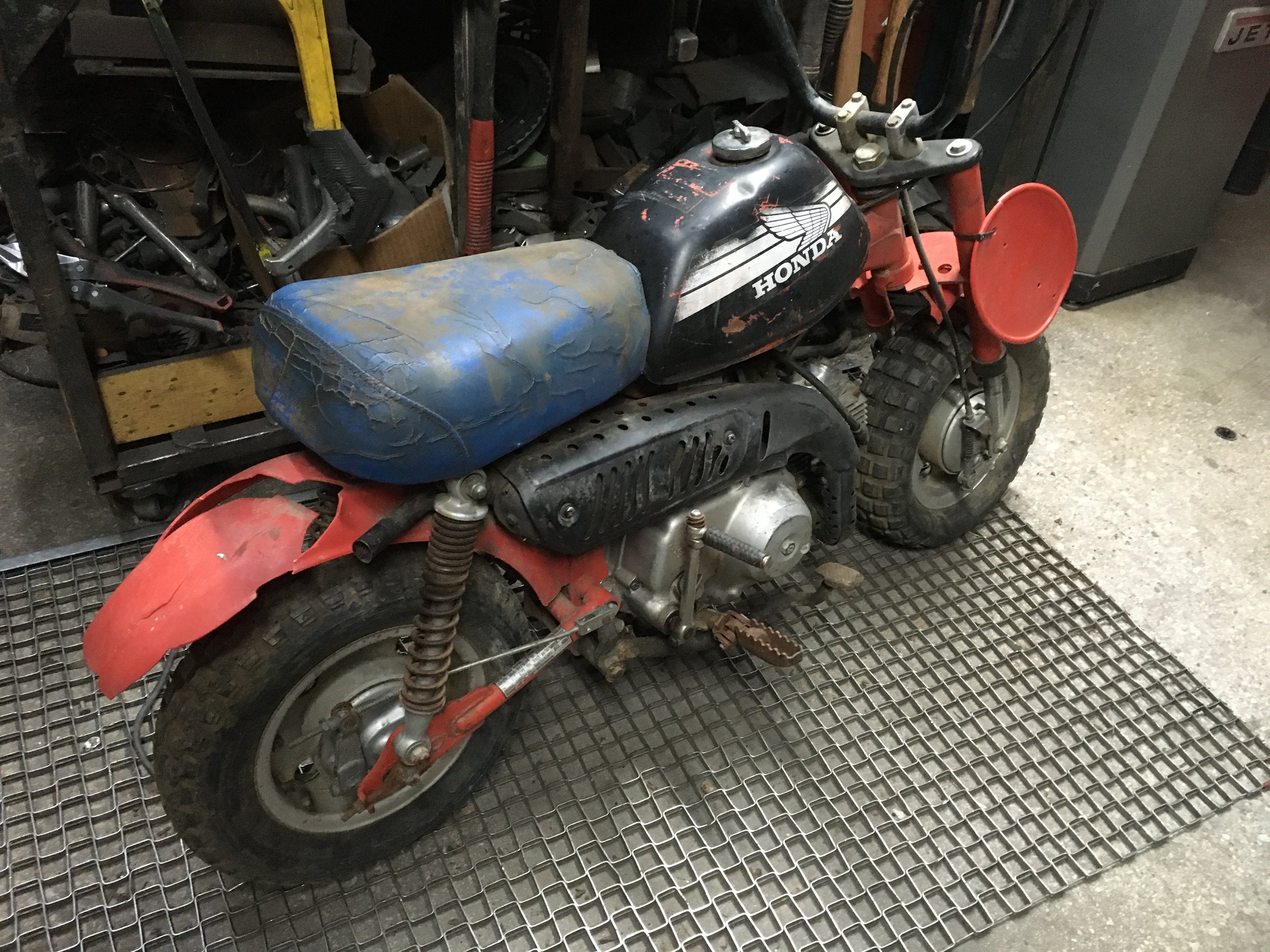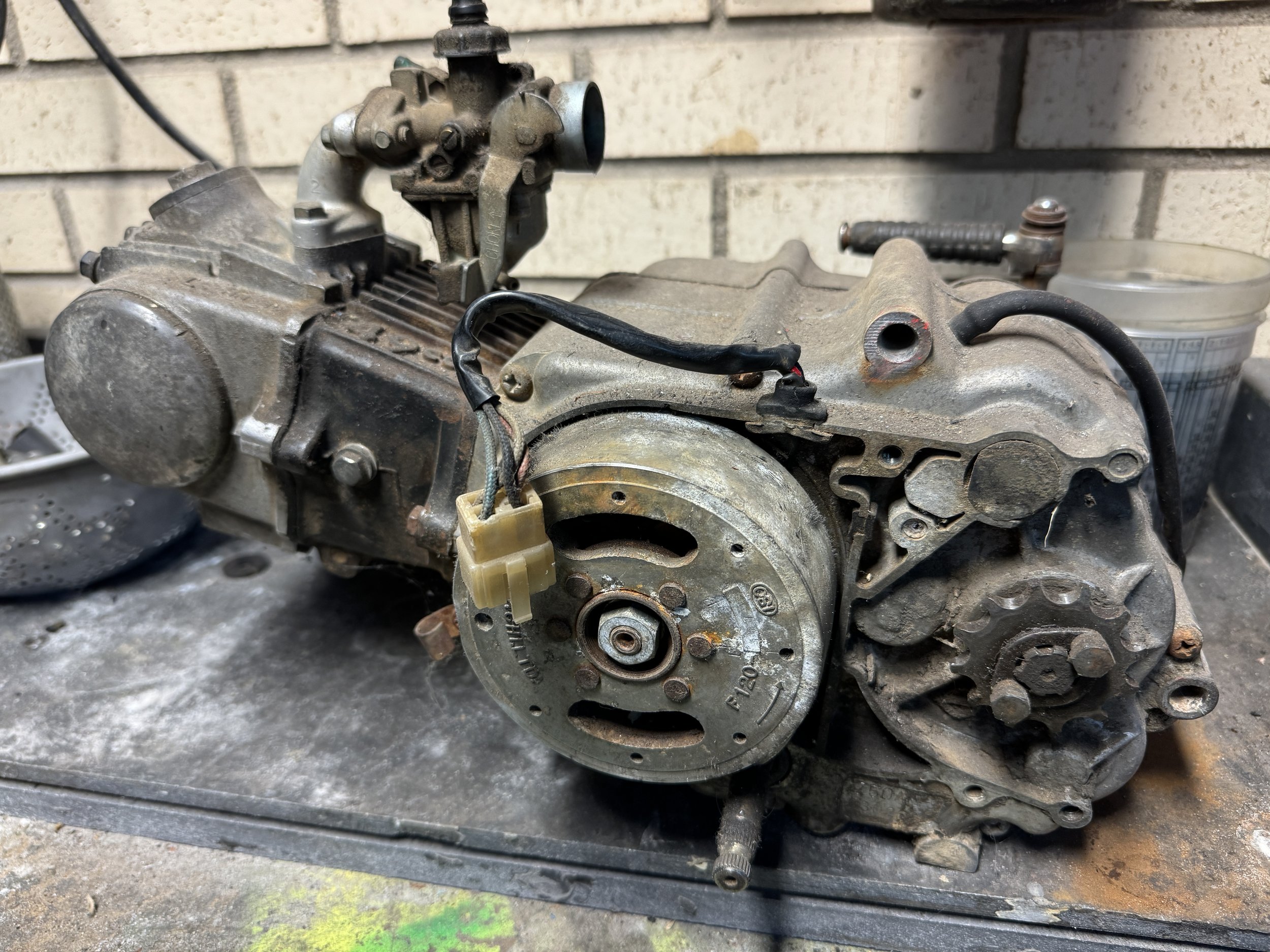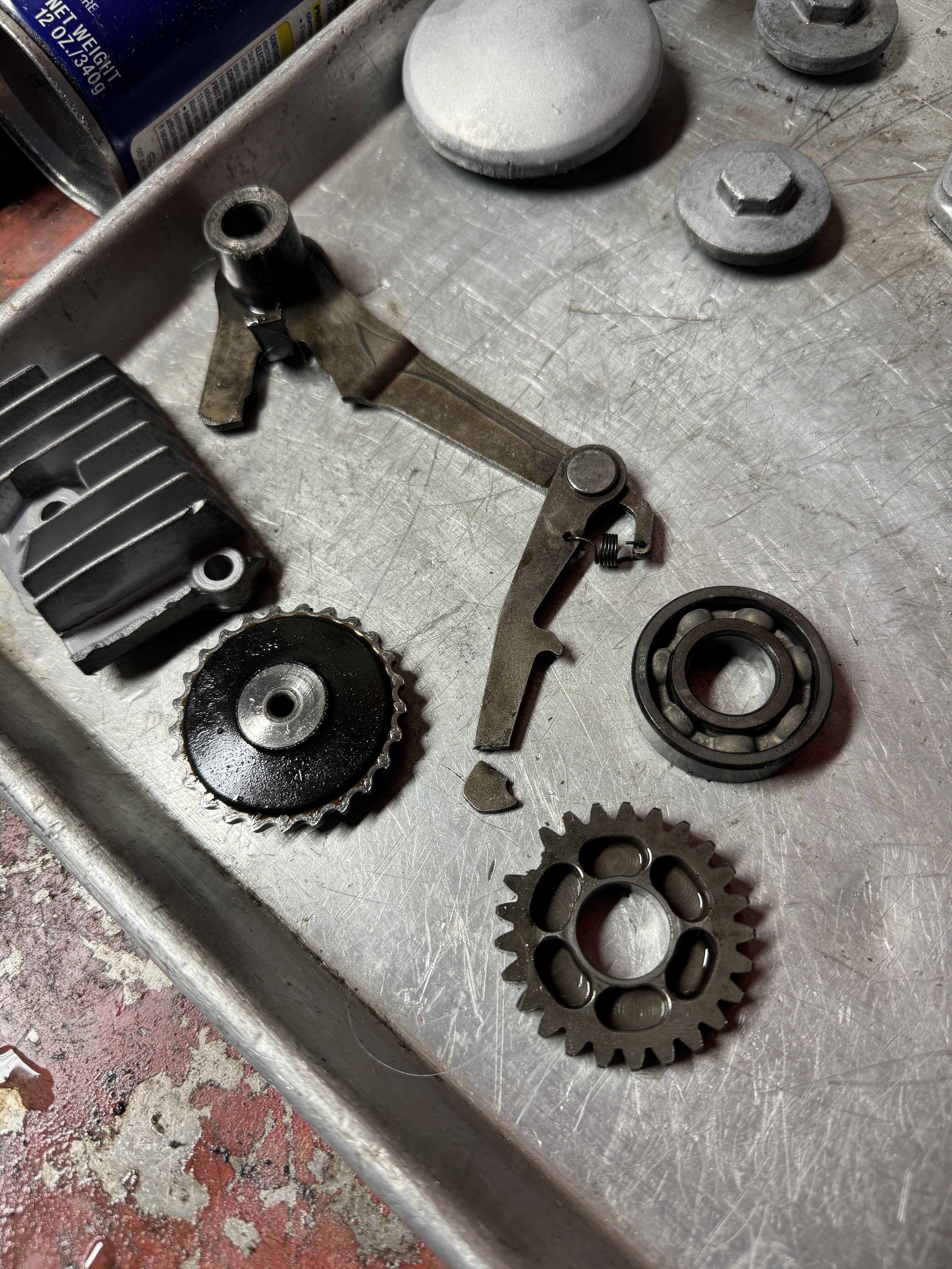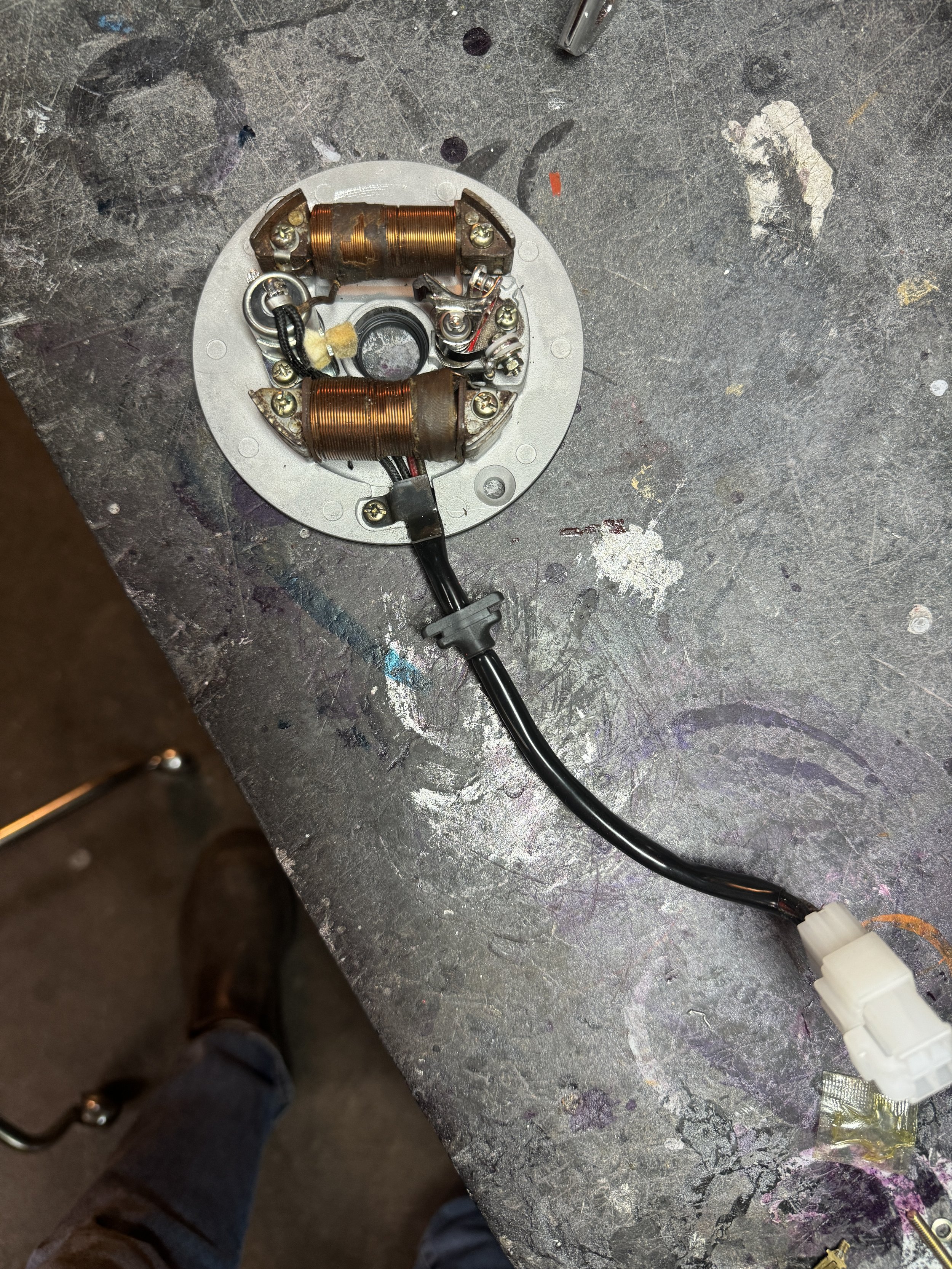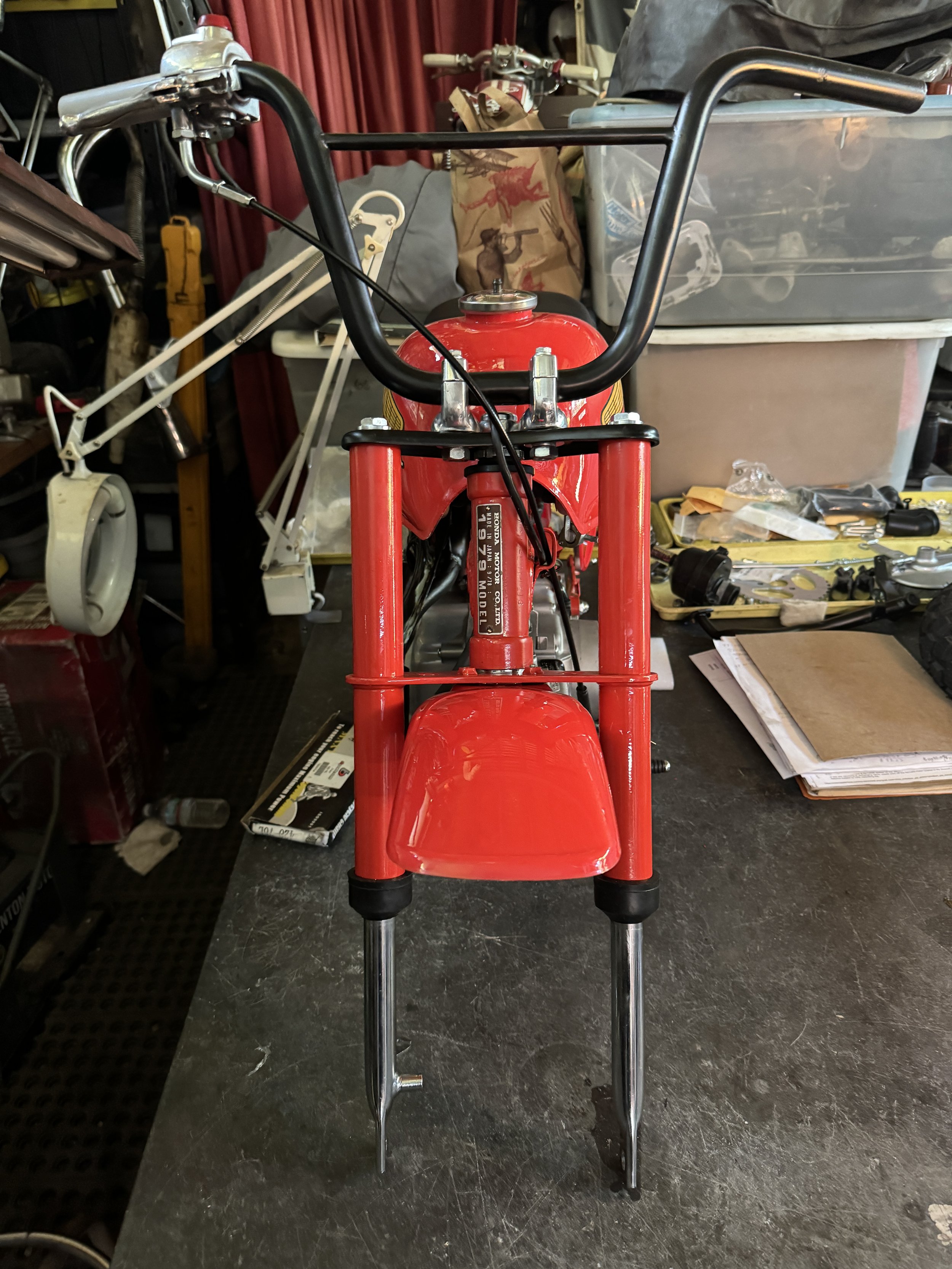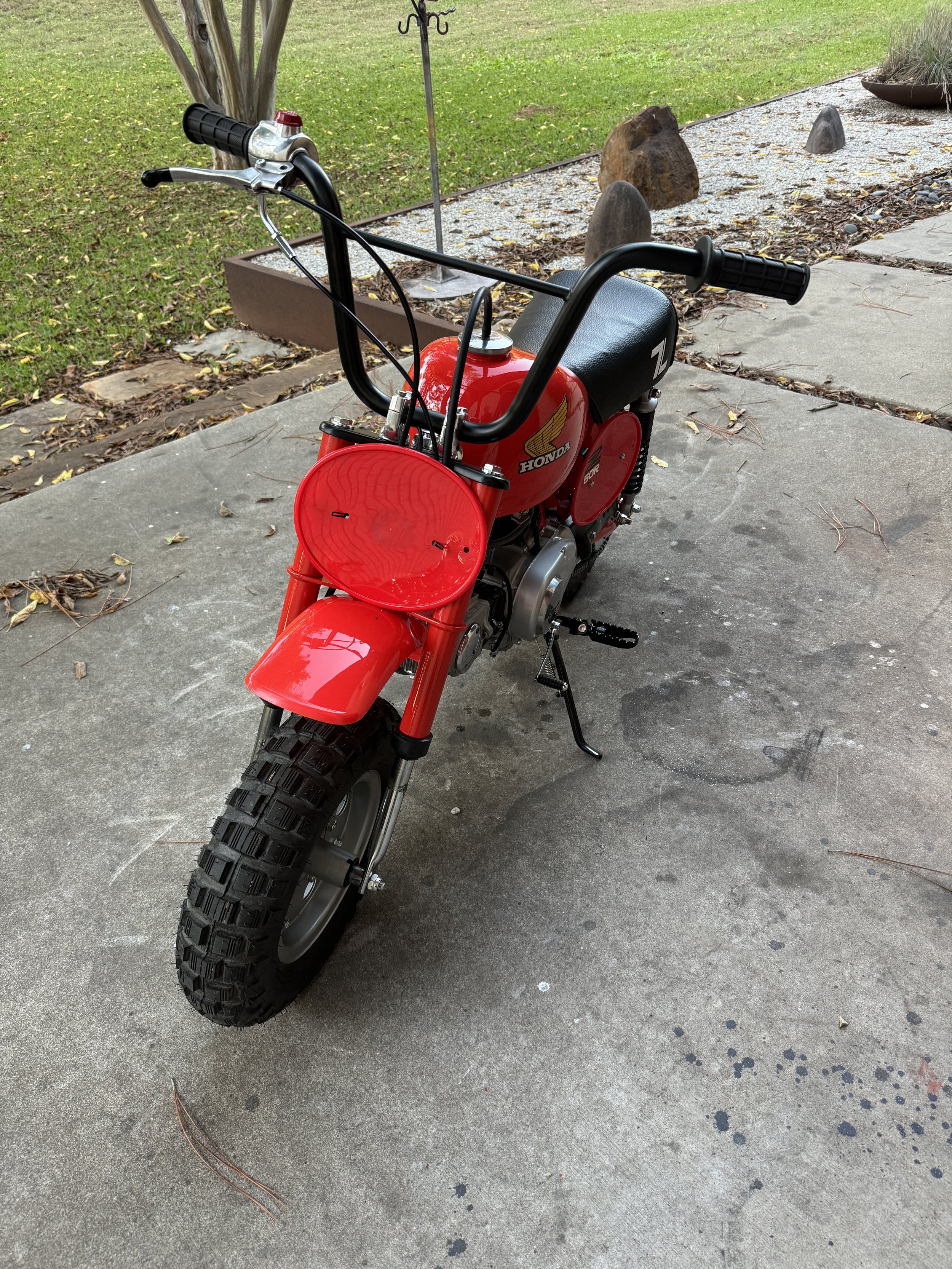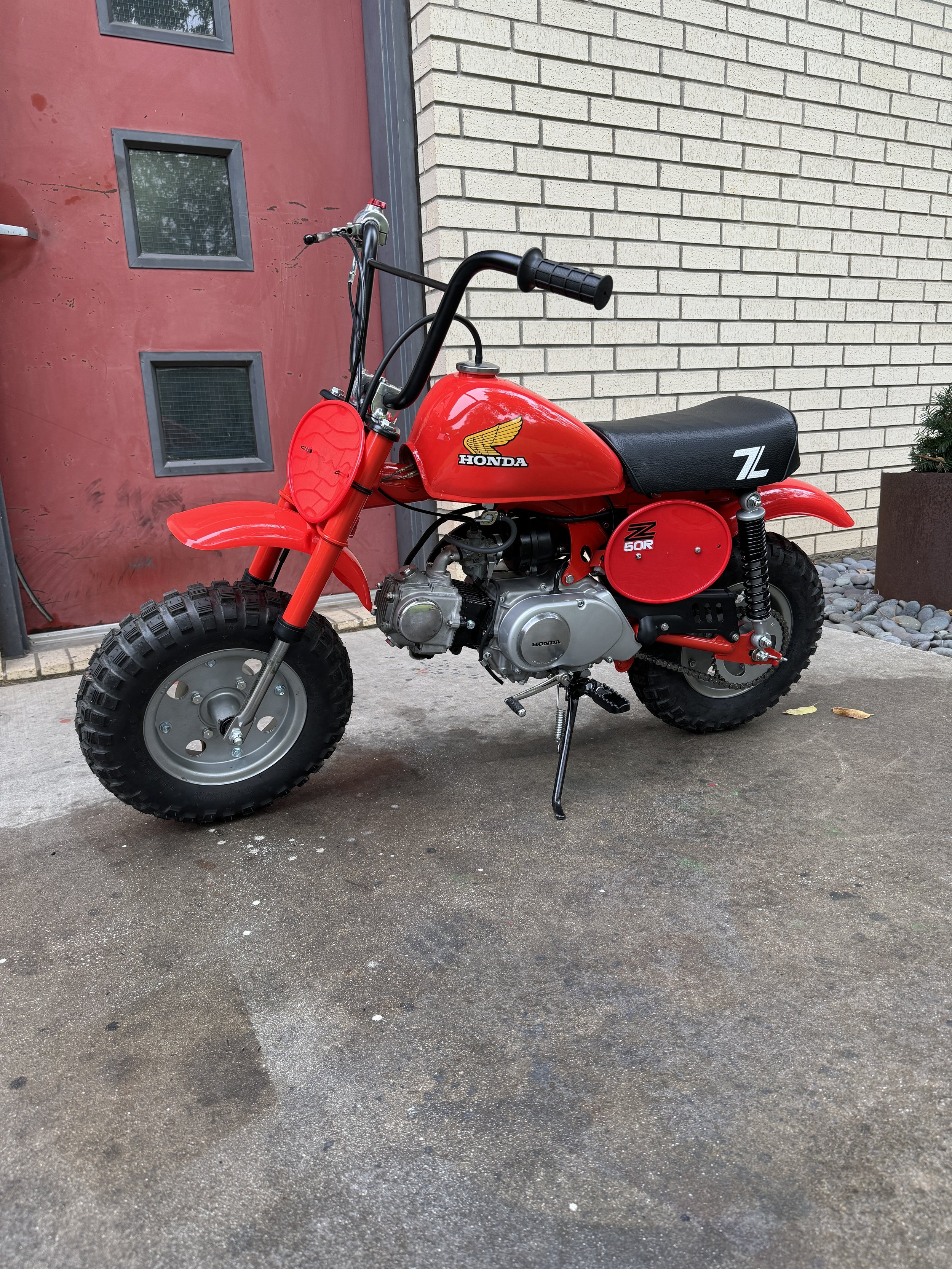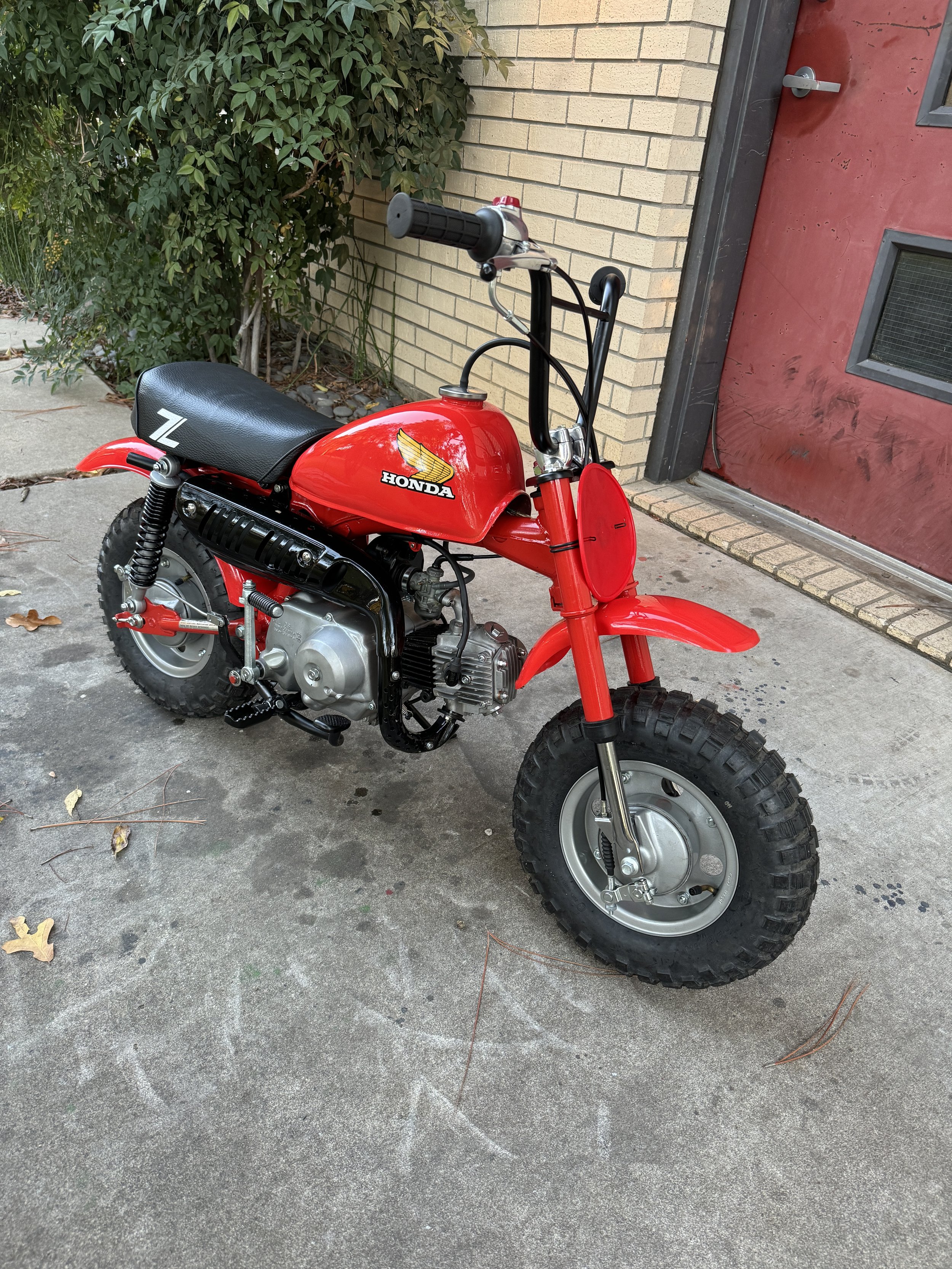Starting with a 1979 Honda Z50R model that had been around the block more than once, and going for a complete stock restoration. The engine felt like it had some compression, but its actual condition was rather poor on further inspection. The challenge of restoring bikes like this one is always a little harder, but that makes it sweeter when it finally is done.
A previous owner had switched out the tank for a 1978 model. The seat and fenders were trashed, kickstand and chain guard missing, and the engine had yet to reveal some of its ugliness. A later model Z50R might have been something I would pass on doing a restoration, but this first year model is a favorite of mine in stock condition. It is one of the more rideable minis for an adult, with its tall bars. The 1979 also retained the larger 4- hole wheel hubs and rims from the earlier model Z50A, as well as the lighting stator, making it easy to add lights to this unit.It was also the first Honda Z50 with plastic fenders.
The 1979 model also had a unique muffler and heat shield, and the number plate was not used on the right side. The muffler is the same as the Z50J model, but with a larger diameter header and tail pipe. The muffler canister on this bike was showing signs of rot, so a good used one was substituted.
The familiar flywheel from the earlier Z50A model and the four wire pigtail. Even without any plans for lighting, it is nice to know that with a few items like an early model wire harness and a couple of switches, that it is ready to go. This engine had obviously been exposed to some moisture, but nothing too bad.
The engine carnage included a busted transmission gear, A seized output shaft bearing, a stripped oil pump drive sprocket, and a broken shift arm. The broken gear-selector arm was a new defect for me to find. Even with somewhere around seventy-five total engine restorations, you can still see something new every once in a while. A good used gear and gear selector arm were pulled from my bins, as well as a side cover for the head. The head covers change slightly over the early model years, and Honda only used the one for this bike for a couple years. I had probably two dozen of the earl style cover, and fortunately, a good correct one.
The frame was in fairly good shape, but some chain rash on the swingarm had to be repaired.
New coils, plugs,and wiring were used to get the stator plate back to new condition. The store kit and ignition coil are also HondaTB Parts pieces, and come with everything needed, even the seal for the crankshaft and stator plate rim.
The one year only muffler and heat shields getting ready for paint.
Zooming forward, the engine has been rebuilt to stock specifications, and aftermarket tank, fenders, fork legs, shocks, and seat from HondaTB Parts were used. A good used OEM air filter assembly is yet to be added, sitting in a tray in the right lower corner of the picture. The frame was painted with two-stage PPG paint, aquired from Marble Motors, in the Tahitian Red color used on the first couple years of the R model.
The HondaTB Parts fenders and tank match the Tahitian red fairly well. The handle bar cross bar was slightly loose and bent, and had to be straightened and re-brazed prior to powder coating.
A kickstand was made to replace the missing one. The footpeg mount and kickstand as well as the brake pedal are also holdovers from the earlier Z50A models. The one year only handlebar mounts were also common to other small Honda models, and allow for them to be switched out. A year later, the handlebars were fixed in place, and too low for adult riders.
The final product. She starts easy like a Honda should, and runs well. One of the give-aways that this is the early points ignition engine, is the magneto cover. The R model switched to a CDI ignition, using a CDI box, different flywheel, stator, and cover, in the early eighties.
Everything is nice and fresh. All the original hardware was re-plated, and new OEM Honda hardware was used for any missing or mangled pieces.

